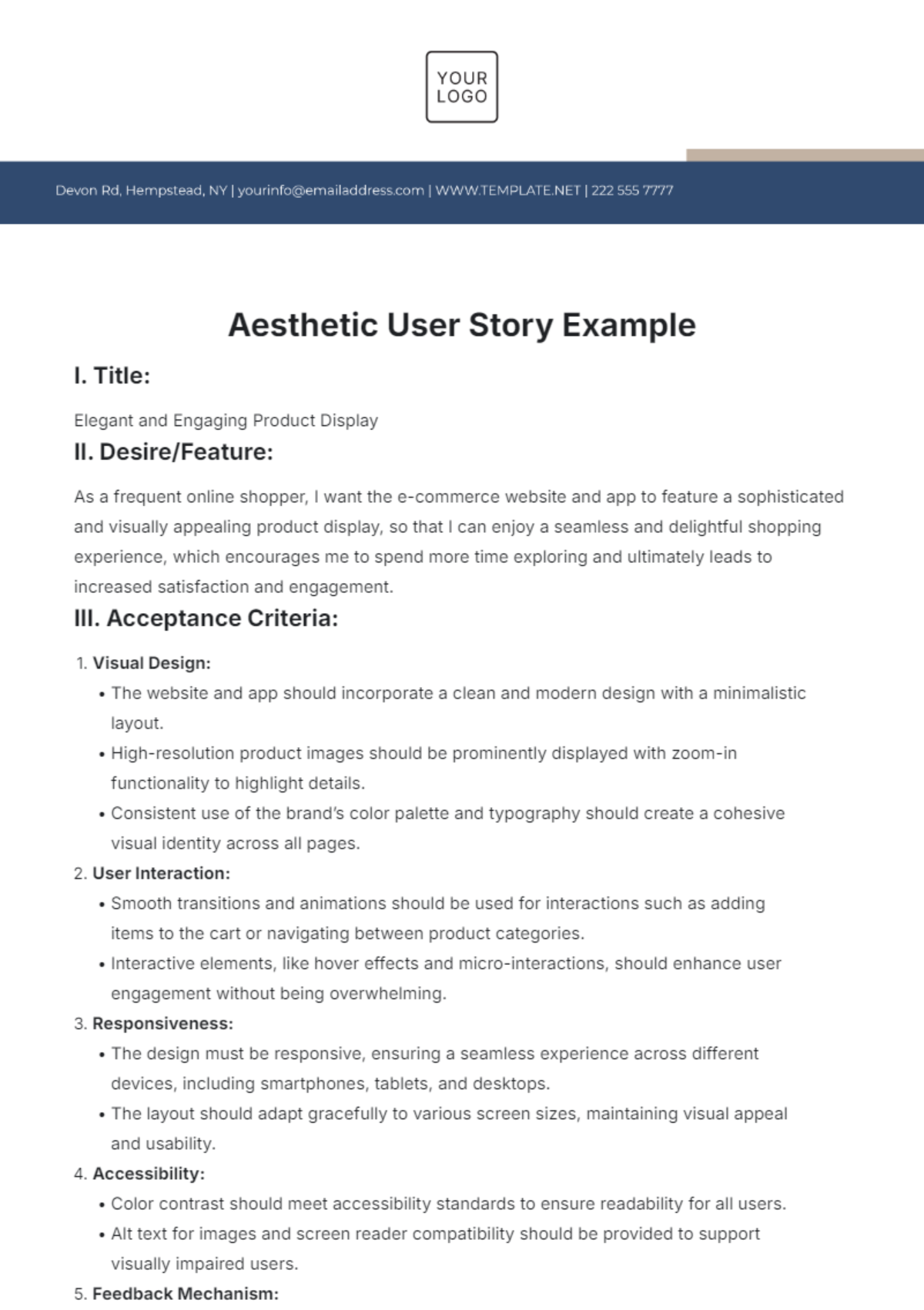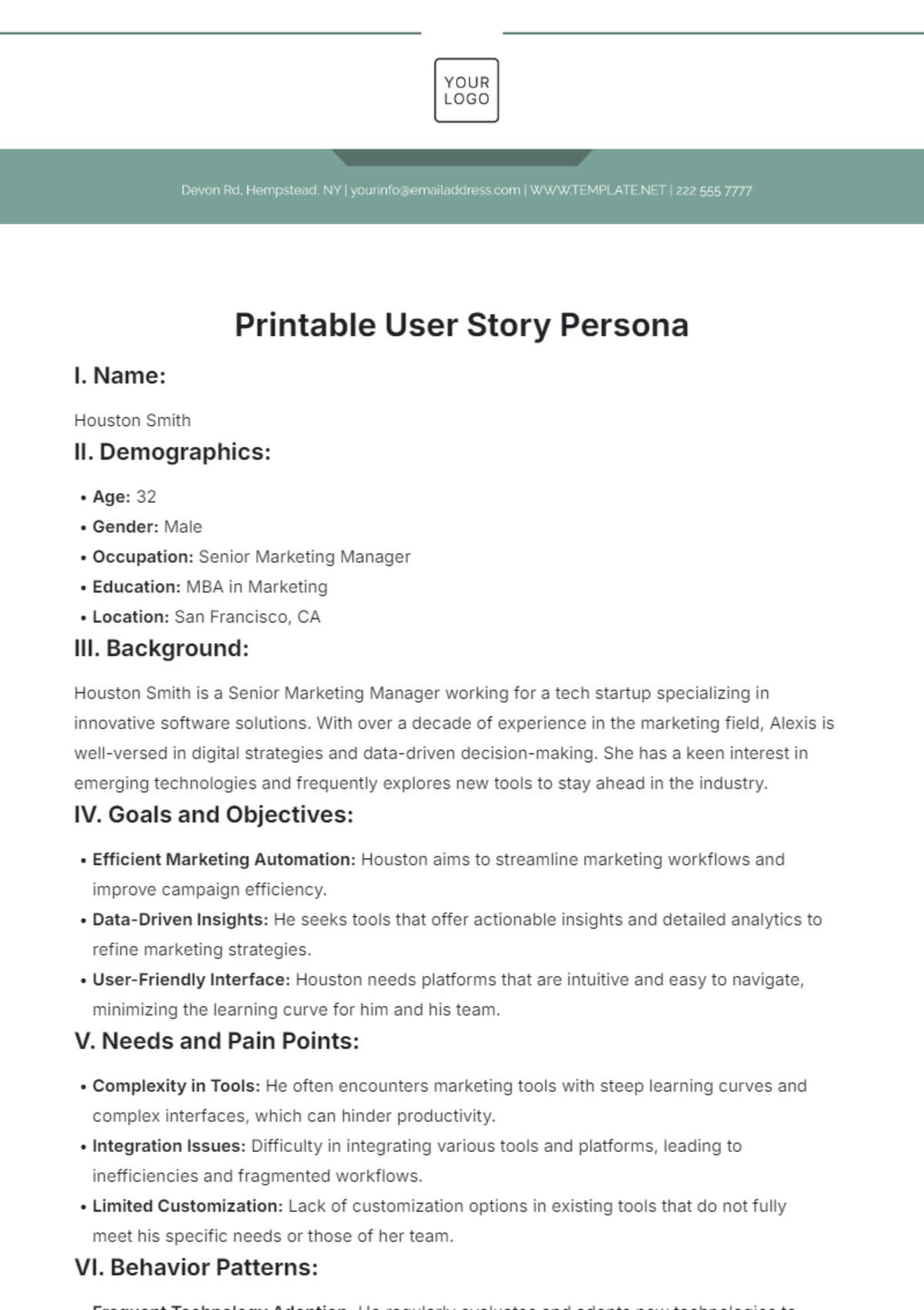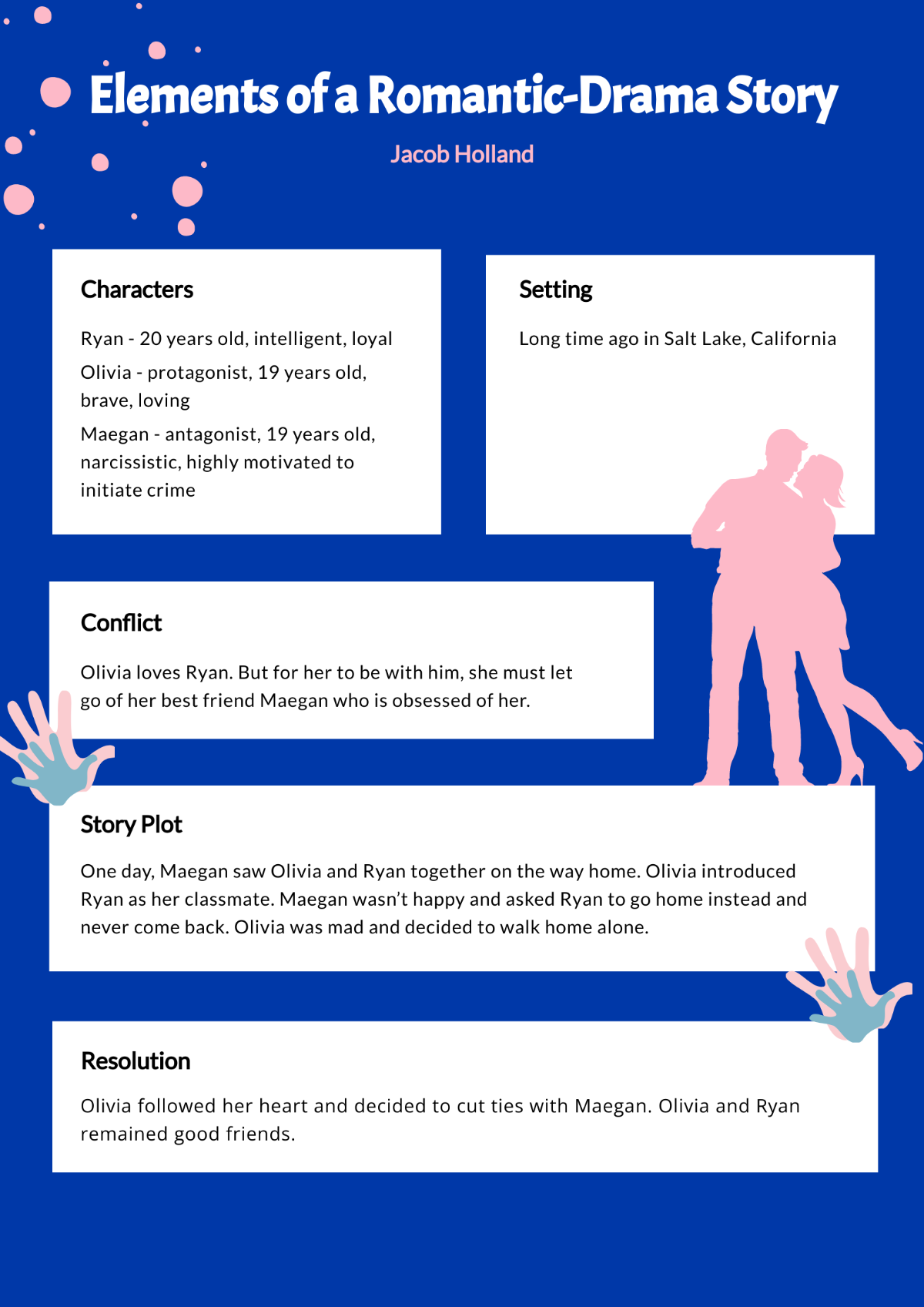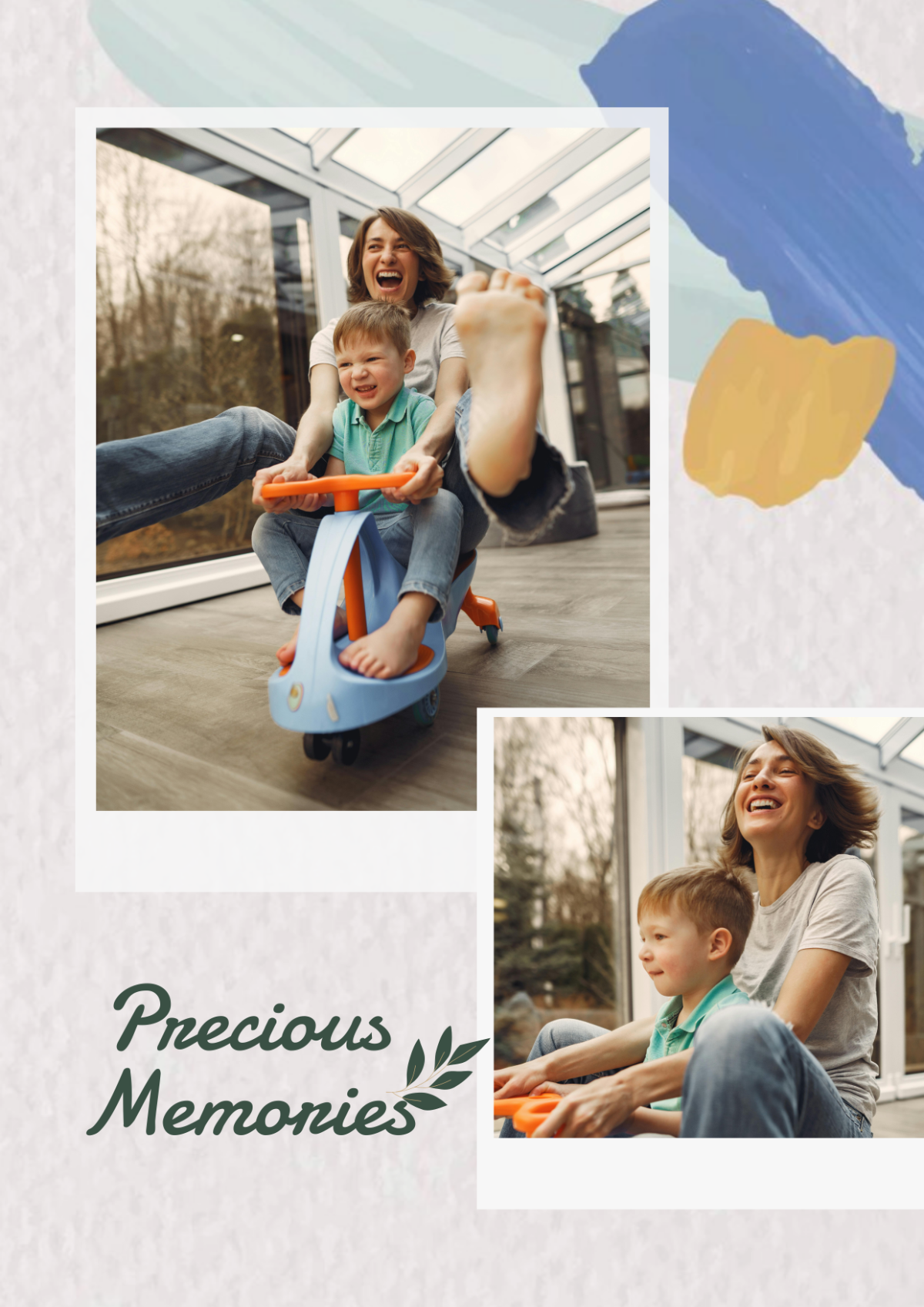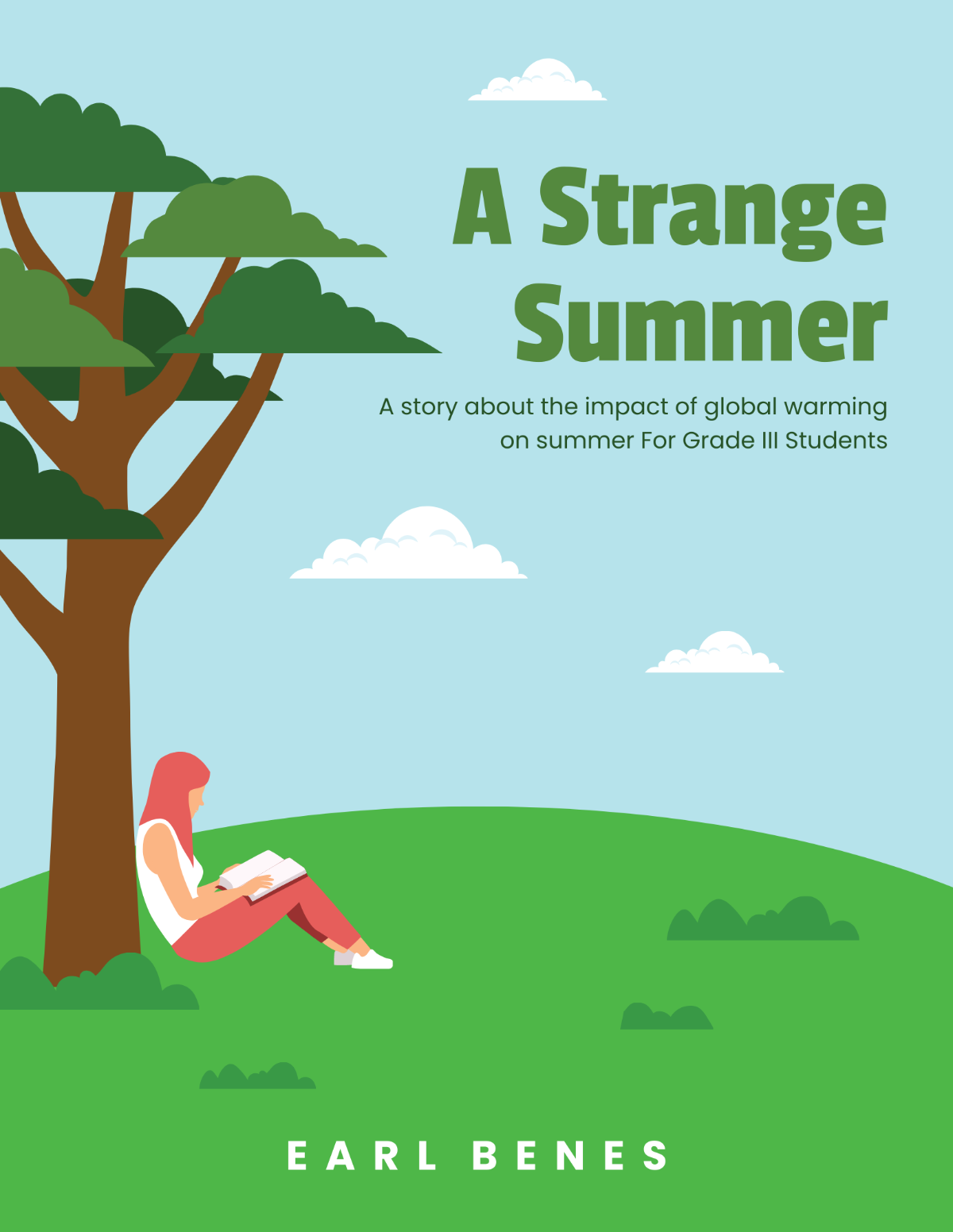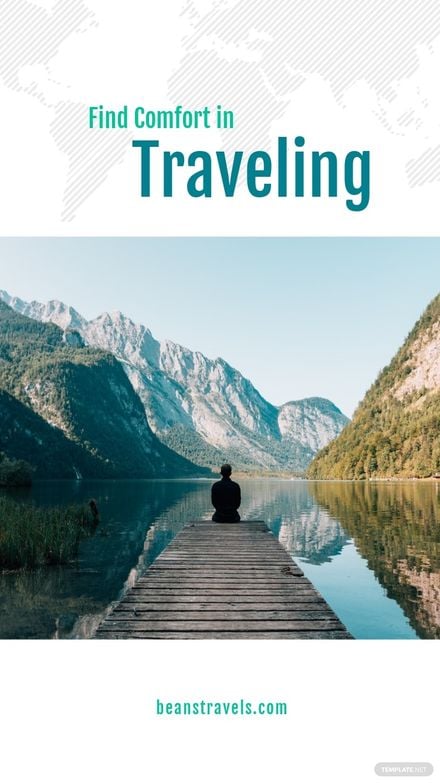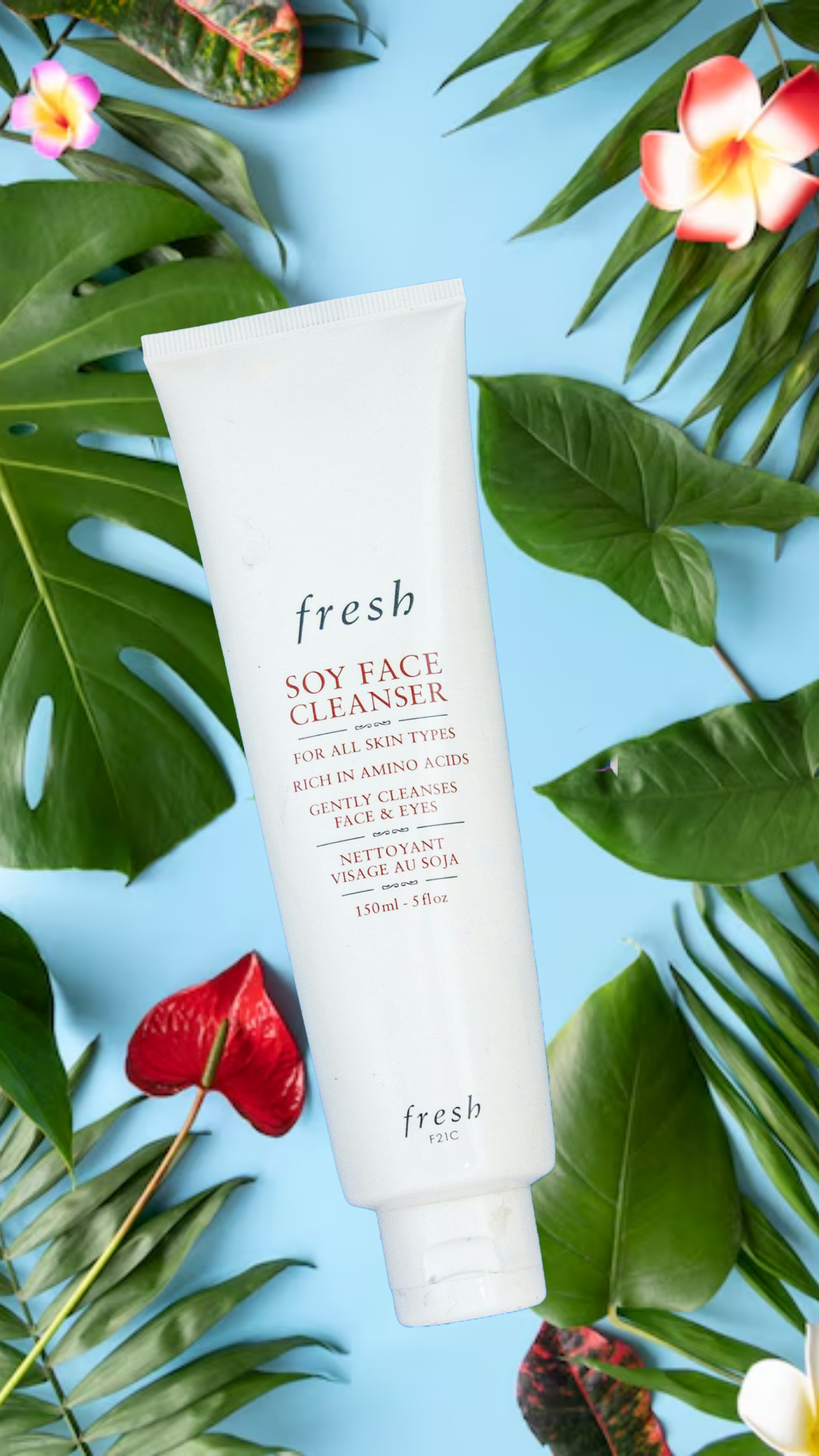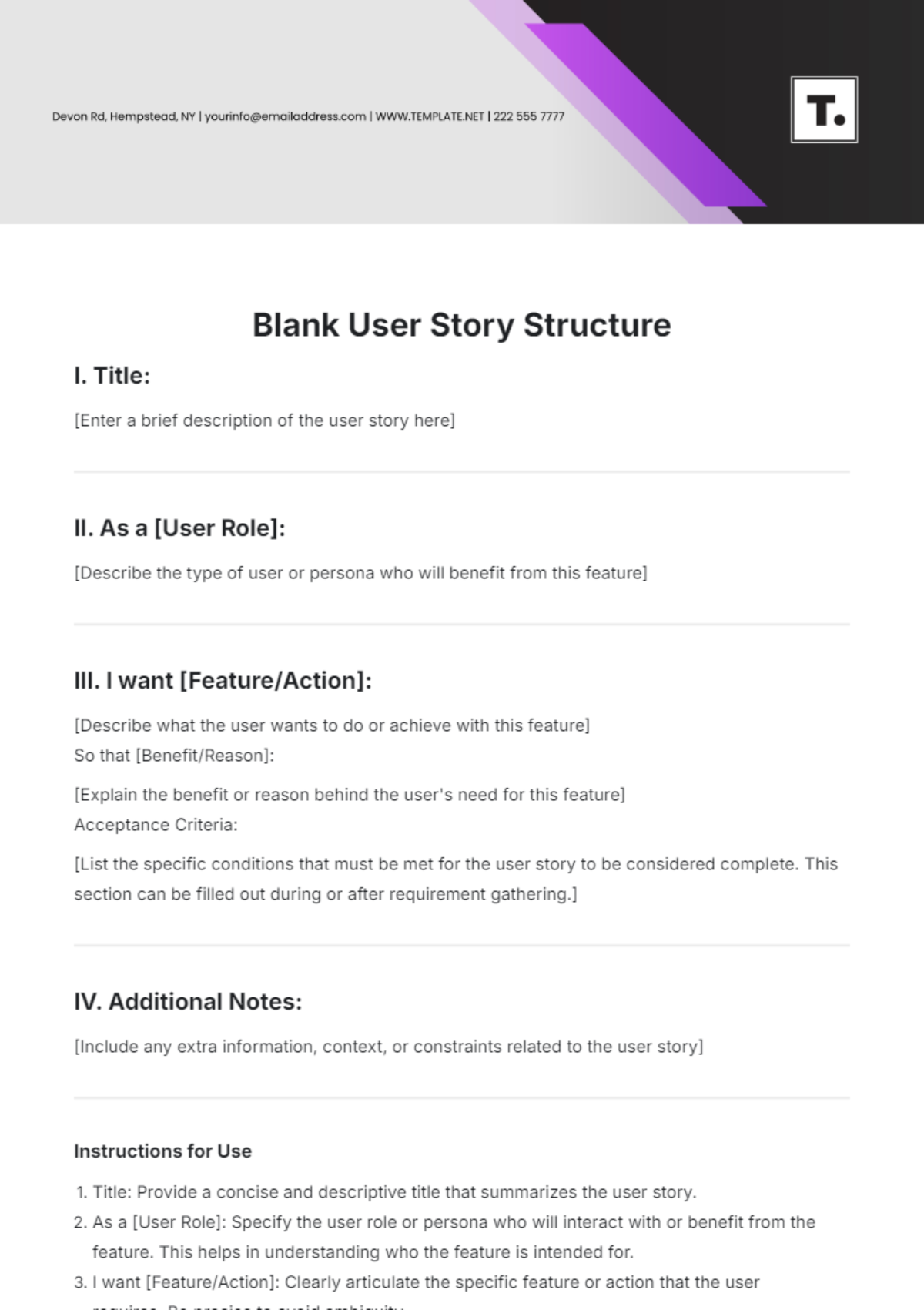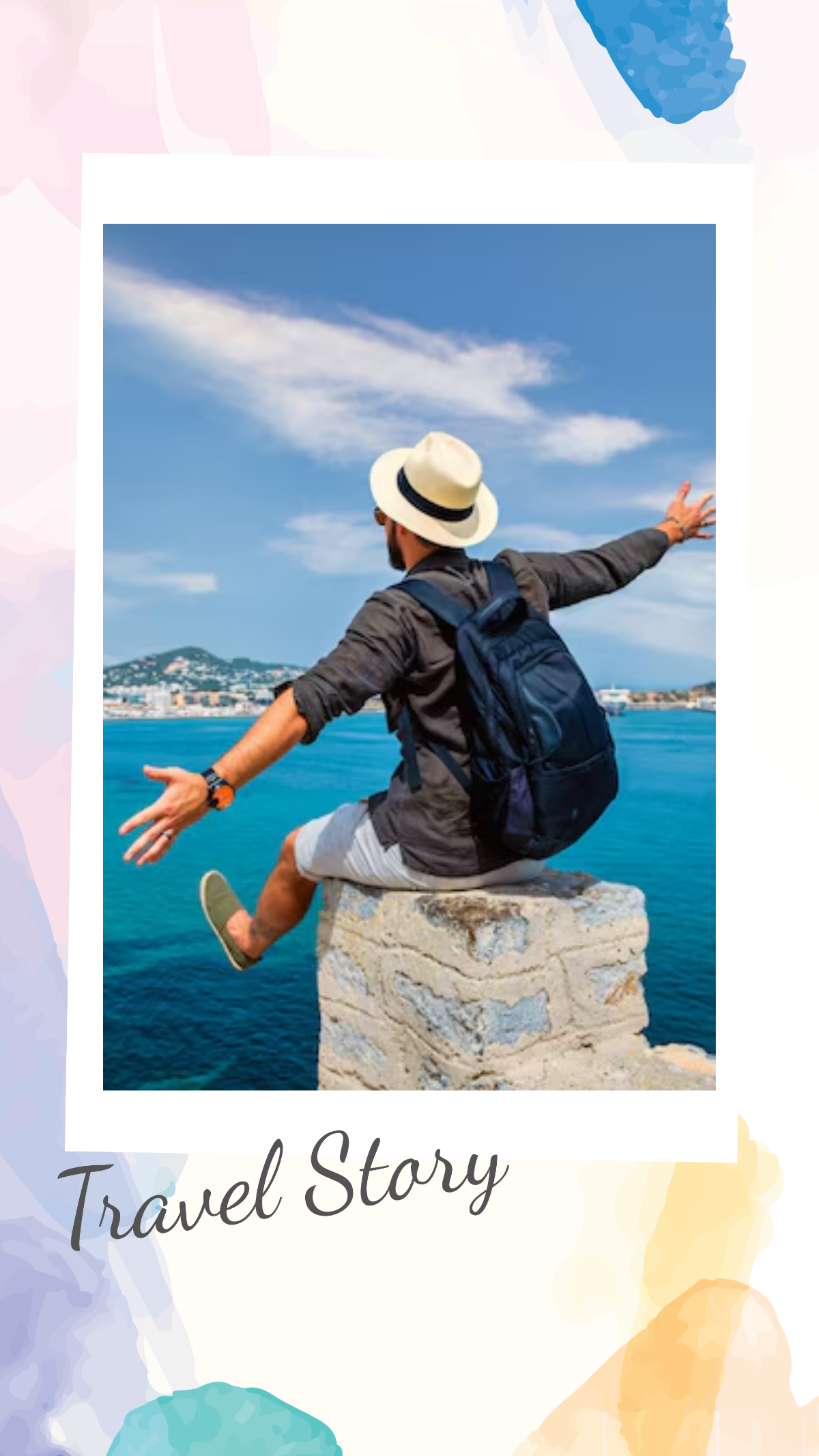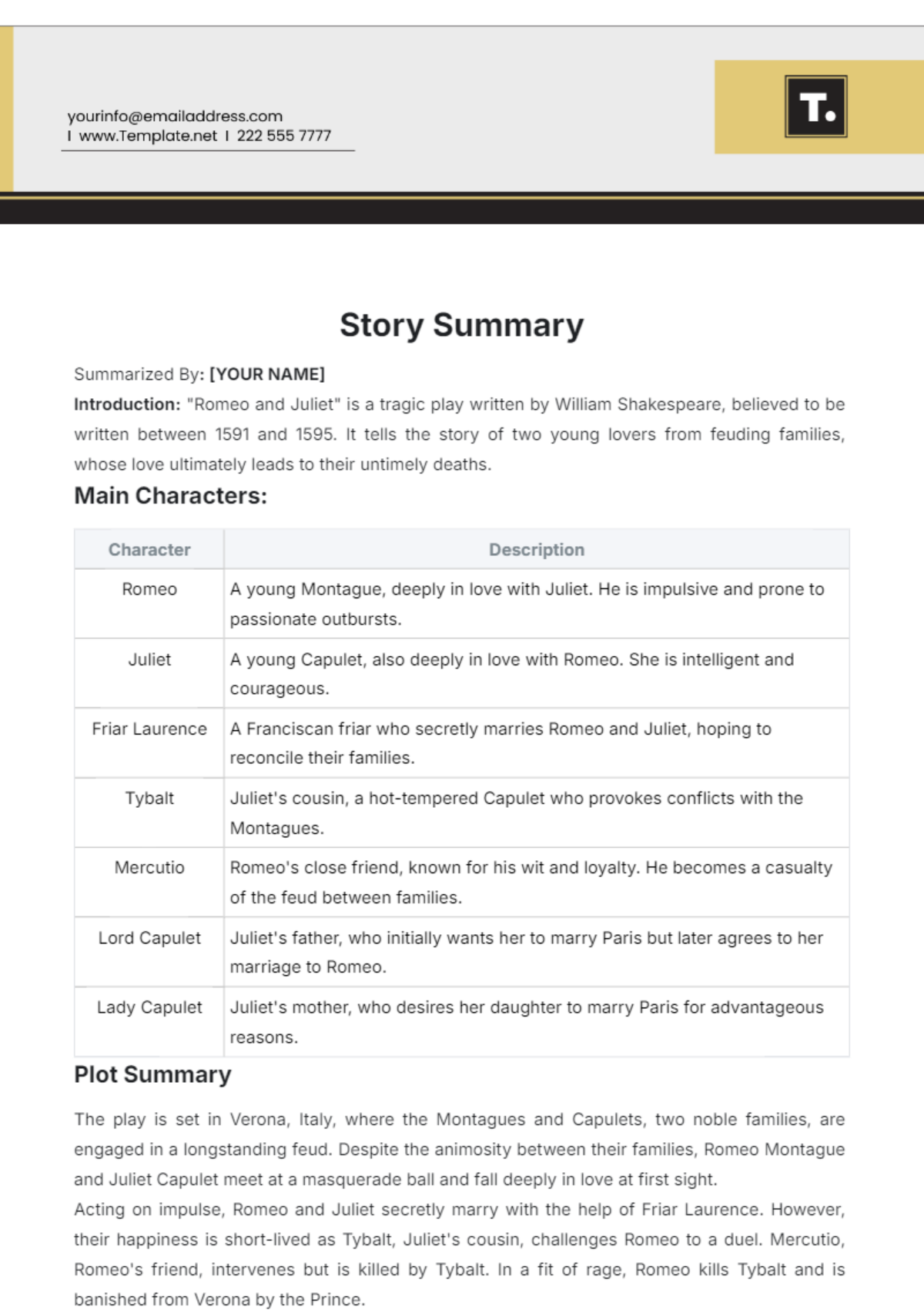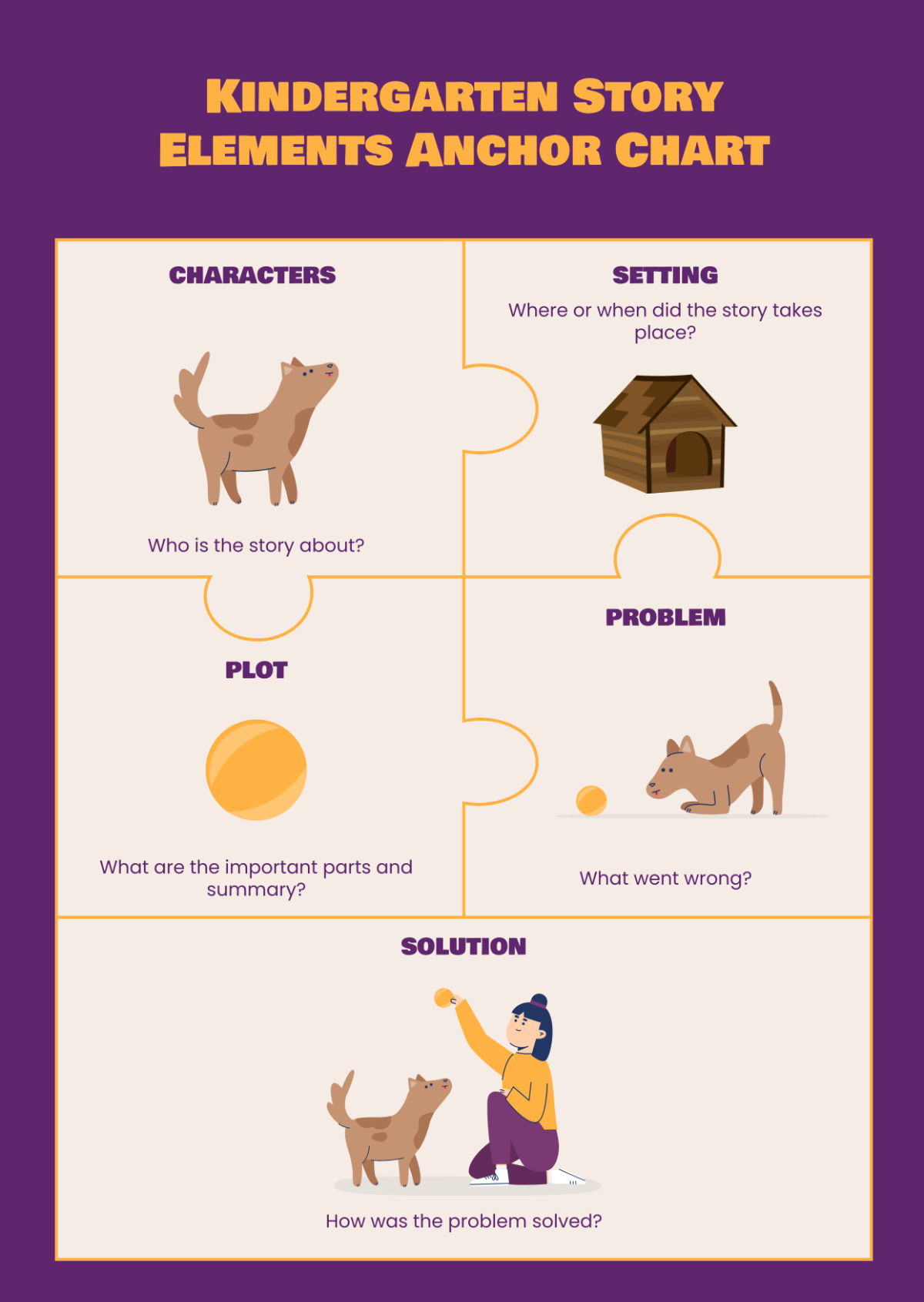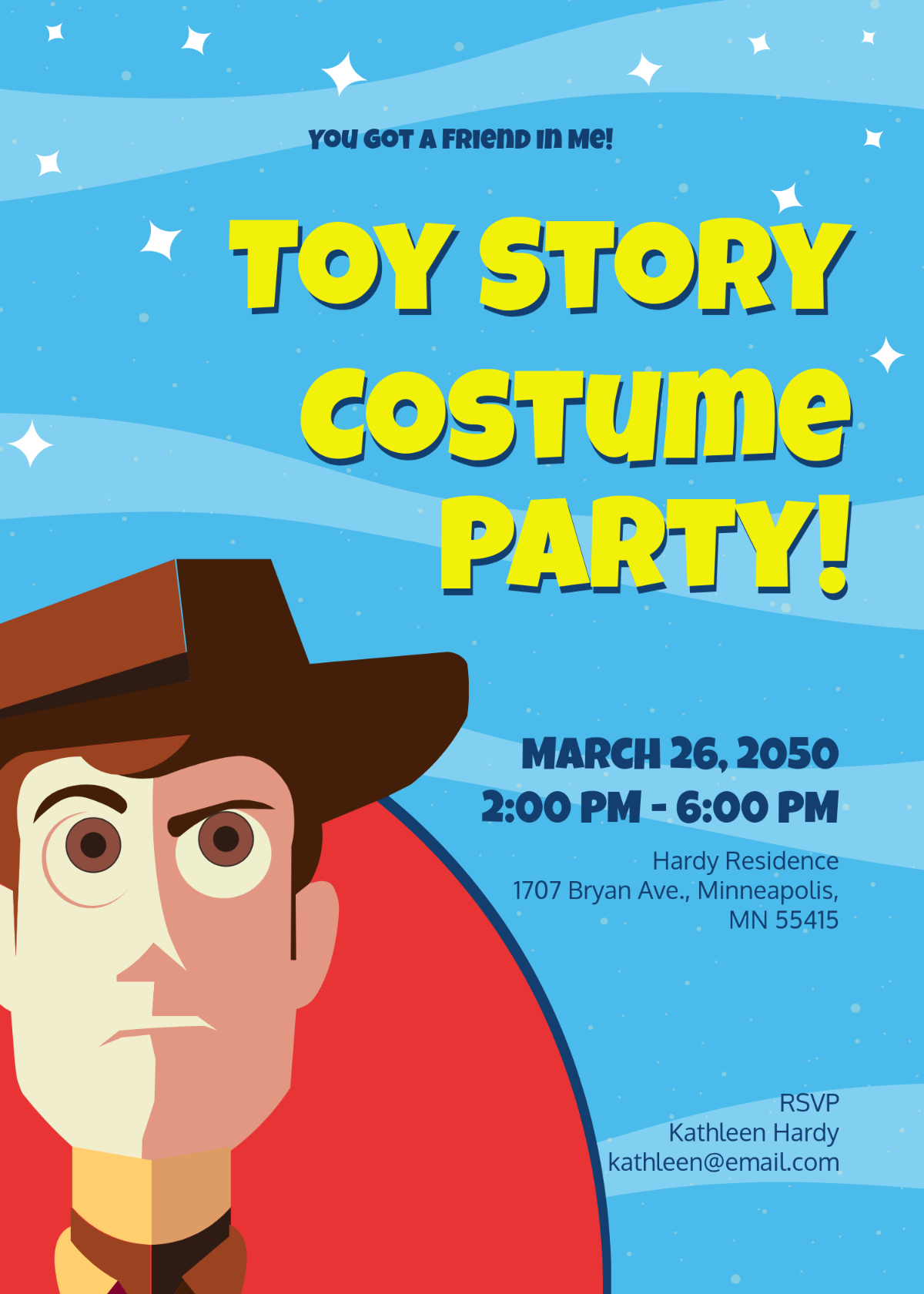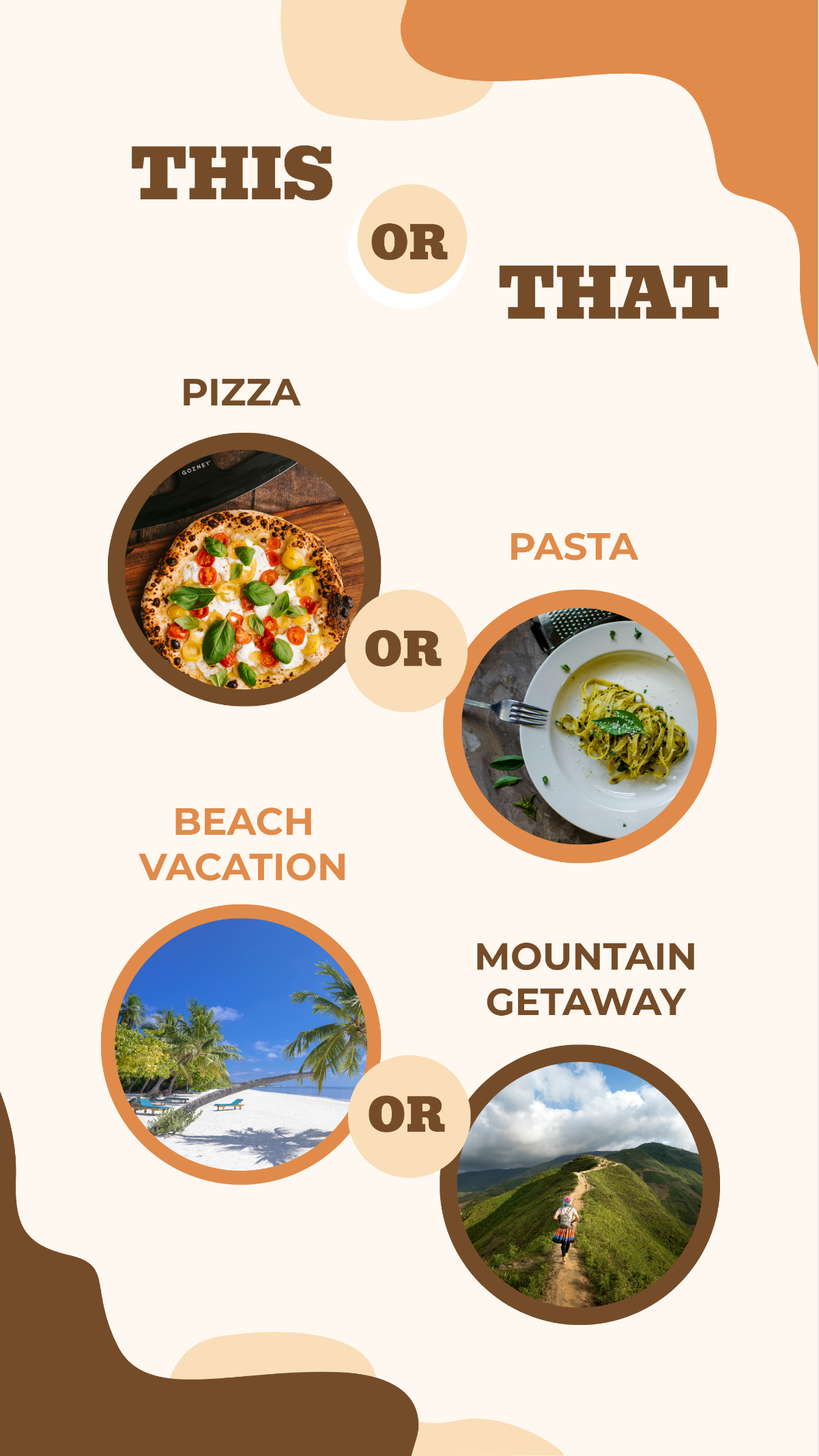User Story
for Product Managers
I. Overview
As a Product Manager, I want to [Specify Action], so that [Describe Goal or Justification].
Description: This user story outlines the requirements and priorities from the perspective of the Product Manager. It serves to align development efforts with strategic business goals and customer needs.
Acceptance Criteria:
Dashboard should display real-time data
Users can customize widgets
Responsive design for mobile and desktop
II. Business Context
In this section, we provide background information and context for the user story. It includes details about the market, target audience, and any relevant business objectives.
Market Analysis: The market demands intuitive data visualization tools to aid decision-making processes.
Customer Needs: Users seek a centralized platform to monitor key metrics and track performance.
Business Objective: To improve user engagement and retention by providing valuable insights through the dashboard feature.
III. User Persona
Identify the primary user persona associated with this user story. Understanding the needs and preferences of the target user is crucial for developing effective solutions.
Name: Sarah
Role: Marketing Manager
Goals: Sarah aims to track marketing campaign performance and identify areas for optimization.
Challenges: Limited access to real-time data makes it difficult for Sarah to make timely decisions.
IV. Feature Description
In this section, we describe the specific features or functionality that need to be implemented to fulfill the requirements of the user story.
Feature: Interactive dashboard with customizable widgets
User Interface: Drag-and-drop interface for adding and arranging widgets
Dependencies: Integration with data analytics and visualization libraries
V. Technical Considerations
Discuss any technical considerations or constraints that need to be taken into account during the implementation of the user story.
Architecture: Microservices architecture for scalability
Technologies: React.js, D3.js, Node.js
Performance: Optimize loading times for large datasets
VI. Risk Assessment
Identify potential risks or challenges that may impact the successful implementation of the user story. It's essential to anticipate and mitigate these risks proactively.
Risk Identification: Potential delays due to third-party API dependencies
Impact Analysis: Could affect project timeline and user satisfaction
Mitigation Strategy: Implement fallback mechanisms and conduct regular API health checks
VII. Timeline and Prioritization
Define the timeline for implementing the user story and prioritize it relative to other tasks or features on the product roadmap.
Timeline: Start: Q2 2054, End: Q3 2054
Priority: High priority due to its impact on user engagement and retention
VIII. Metrics for Success
Outline the key performance indicators (KPIs) or metrics that will be used to measure the success of the user story once it's implemented.
KPIs: User engagement, Dashboard usage frequency, Time spent on dashboard
Targets: Increase user engagement by 20%, Reduce time to insight by 30%
Monitoring Plan: Regularly review analytics dashboard and solicit user feedback
By following this template, teams at [Your Company Name] can ensure alignment with strategic business goals and customer needs while effectively managing risks and prioritizing tasks on the product roadmap.

